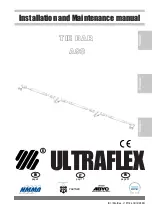
P
AGE
151
T
UNE
B
ASE
200 I
NSTALLATION
& U
SER
’
S
G
UIDE
- M21201-01A1
A
PPENDIX
H - R
EMOTE
O
VERVIEW
The “2”, “3”, “4”, “5”, “6”, and “8” keys each support three letters and one number and
can be pressed from one to seven times to display upper case, lower case, and numeric
characters. The “7” and “9” keys both support four letters and one number and can be
pressed from one to nine times. The “1” and “0” keys support four special characters
and one number and can be pressed from one to five times.
The text characters follow the same convention used by a standard telephone – except in
the case of the “1” and “0” keys which contain additional characters that are useful for
editing music information.
When entering characters at the beginning of a field or characters that follow a space,
TuneBase 200 assumes that upper case characters are preferred. Therefore, characters
are entered in the following cycle – uppercase, lowercase, and numeric. For example, the
first key press enters an uppercase letter corresponding to the first letter associated with
the key. Pressing the “2” key once displays an “A” in the text field, pressing the “2” key
twice displays a “B”, pressing it again will display a “C”. The fourth key press displays
a lower case “a”, the fifth key press displays a lower case “b”, and the sixth key press
displays a lower case “c”. Lastly, pressing the “2” key a seventh time displays the
number “2”.
When entering the second character in a text field or the second character following a
space, TuneBase 200 assumes that lower case is preferred and the character entry cycles
in the following pattern – lowercase, uppercase, and numeric.
















































